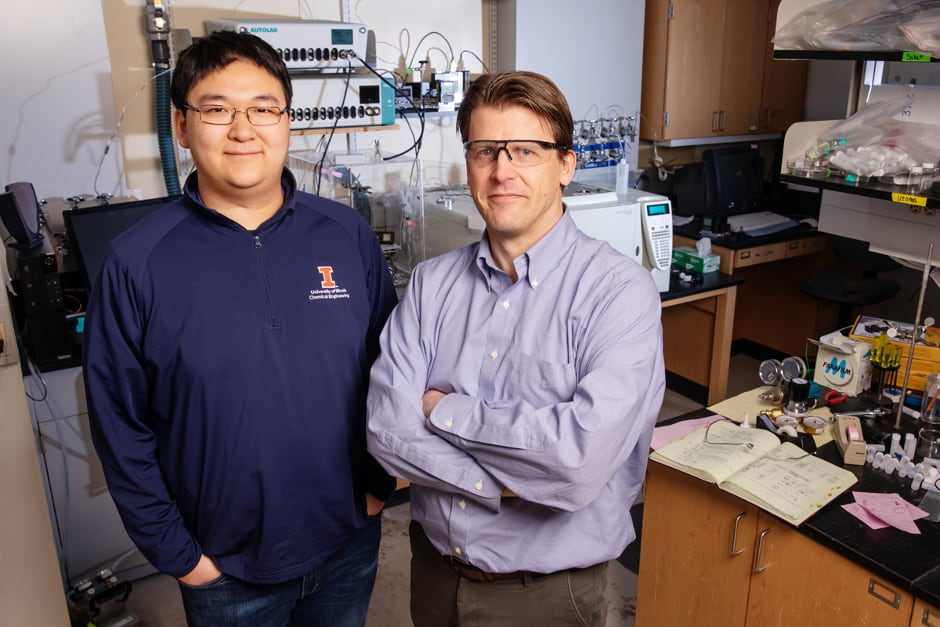
The team at the University of Illinois at Urbana-Champaign are said to have assessed the technical and economic feasibility of a new electrolysis technology that uses glycerol, a cheap biofuel byproduct, to reduce the energy consumption of the waste-to-value process by 53 per cent. The new findings are published in Nature Energy.
Conversion of CO2 to chemicals like ethylene for plastics is possible through electrochemical reduction, a process in which a stream of CO2 gas and a fluid electrolyte move through an electrolysis cell that breaks the CO2 down into molecules like ethylene on the cathode. It also produces oxygen from water on the anode, the researchers said.
"About 90 per cent of the energy required in conventional CO2 reduction is used up by the oxygen-producing, anode side of an electrolysis cell," said Paul Kenis, a chemical and biomolecular engineering professor, department chair and study co-author. "But there is no big market for the excess oxygen, so 90 per cent of the energy is essentially wasted."
Finding a feed material that reduces the energy to drive the anode reaction could be a strategy for radically reducing the energy requirements of CO2 conversion, according to a recent National Academies Report of which Kenis was a co-author.
The new study proposes glycerol - an organic byproduct of sugar cane biofuel production that requires less energy to oxidise - as an alternative to the energy-intensive oxygen-producing step.
To test if the new electrolysis technique has the potential to push the full CO2 conversion process to a carbon neutral or negative budget, the researchers examined the cost and energy consumption for the production cycle of the waste-to-value process. The four-step cycle includes the capture of industrial CO2 waste gas, the input of electricity, the new electrolysis reaction, and the separation and processing of the final chemical products.
"Our model uses the current electrical grid setup as the source of electricity to make the scenario more realistic," Kenis said. "Being able to drive CO2 conversion with already-in-place infrastructure - and not relying on the hope of the future grid being powered by 100 per cent renewables - while achieving carbon neutrality or negativity could be a holy grail scenario."
The analysis includes best- and worst-case CO2 emissions and energy consumption scenarios and concludes that the prospects of CO2 reduction, in terms of CO2 emissions and economics, can drastically improve by looking beyond conventional anode reactions.
"The glycerol-based electrolysis reaction shows a lot of promise. However, we will continue to explore other organic waste materials because even when production rises in the wake of increased biofuel production, it still will not be enough to fully support the need," Kenis said. "The good news is that the chemistry involved is flexible and there are a lot of organic waste products that can do the job."
Many researchers focus on improving the selectivity and activity of chemical catalysts for CO2 reduction reactions, and that work needs to continue, said Sumit.




Glasgow trial explores AR cues for autonomous road safety
They've ploughed into a few vulnerable road users in the past. Making that less likely will make it spectacularly easy to stop the traffic for...